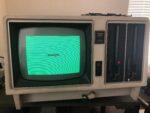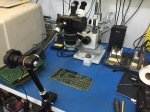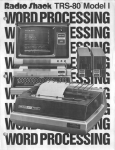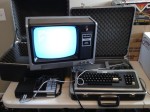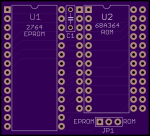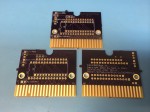
The little Radio Shack TRS-80 model TP-10 was a thermal printer with a serial interface, formerly sold for use with machines like the Color Computer. They show up on eBay from time to time, sometimes for very few dollars. They’re small and quiet, and suitable for utility printing such as when developing BASIC programs. You wouldn’t want to turn in a book report printed on one, but they’re fine for utility purposes. I got mine for next to nothing as a ride-along with some other items in an eBay lot. It had a bit of paper left in it, but the paper appears to have weathered a lot of hot summers in somebody’s garage, and it doesn’t give very good print quality any more.
Unfortunately, paper for the TP-10 isn’t so easy to find. They use 4-1/8" wide thermal roll paper, which doesn’t seem to be a common size in the US at this time. When original TP-10 paper shows up on eBay, it’s listed at $10 a roll or more… I think I paid about that much for the whole printer! I decided to try an experiment to see how easy it would be to cut down common (for the time being…) FAX machine paper.
… Read More!
